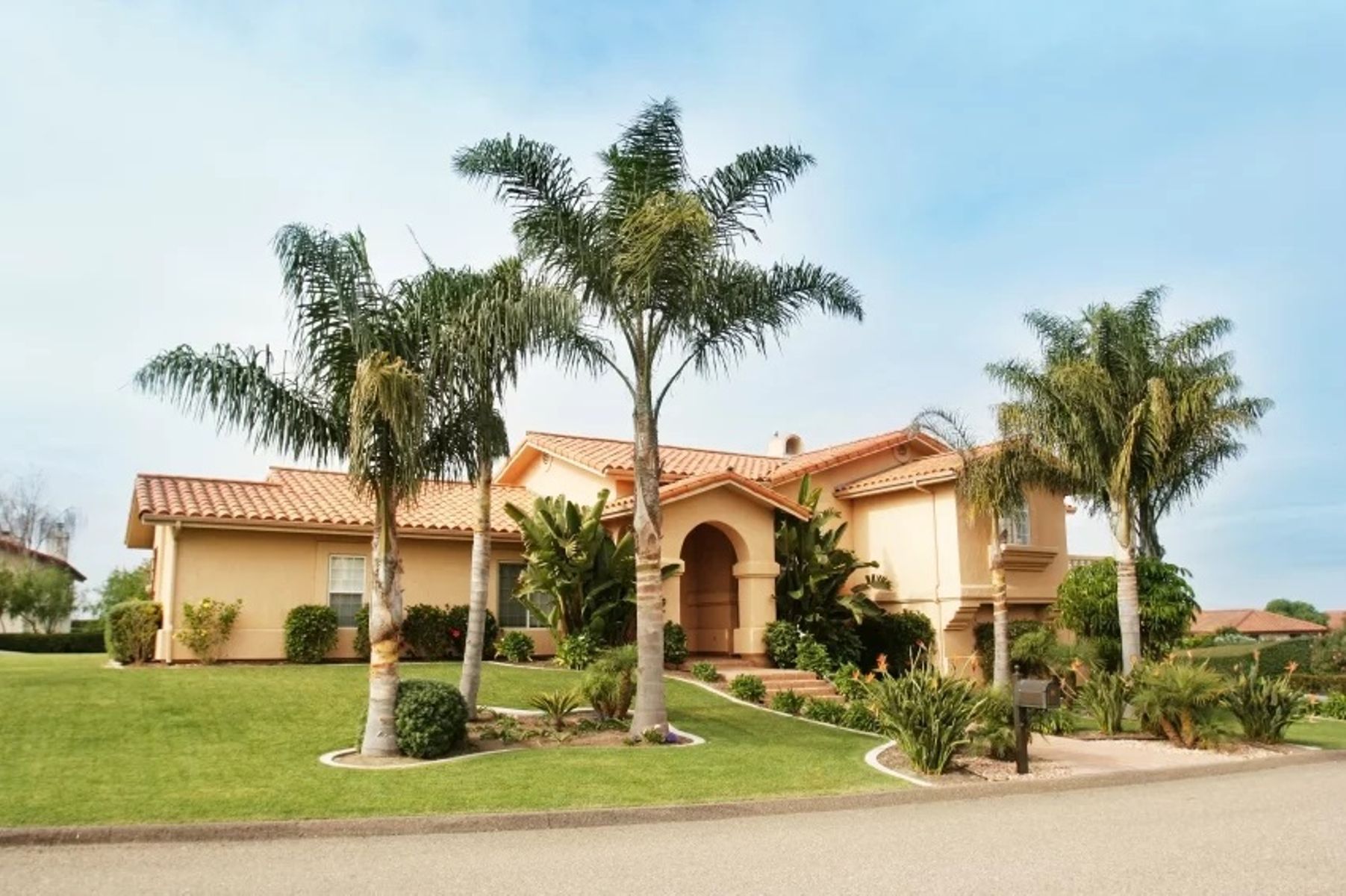
There are many ways to improve your property and increase the value of your home, but landscaping is often undervalued as one of them. Not only does it help sell you property when the time comes, good landscaping can also improve its value by enhancing some of the environmental and lifestyle factors of the property. An easy and simple way to add to your garden without committing to high maintenance landscaping, is to plant some trees. Trees offer shade, shelter, aesthetic appeal and energy savings; they can also increase the overall value of your property by anything from $1,000 to $10,000 per tree. Tree choice and maturity will determine just how much value can be contributed but planting early in your ownership means that your investment grows steadily through the years as the trees grow.
Featuring a number of quality well positioned trees can be a real boost to your property but it’s important to consider the types of trees you will put in – specifically their growing habits and the shape they will form as they mature. Height is also crucial, as is their seasonal behaviour – autumnal colours are gorgeous it’s true, but clogged drains and constantly raking sludgy leaf litter are not. Blossoming trees are also a big hit for their explosion of colour at the end of a long grey winter, but not for people with alergies – and don’t even get us started on carpets of mouldy fruit on the ground.
Download Home Sellers Guide
To plan what kinds of trees to put into your garden, it’s worth sketching out a rough map of your outdoor spaces and making a list of what you want the trees to do. You may want something of medium height and bushy to cover an ugly shed or corner, or something tall and leafy that creates shade in a particularly hot spot in the garden, or cools a front room in the house to cut down on air-conditioning costs. Espaliered fruit trees are a great way of covering up an unattractive fence, while quick growing hardy plants like Jasmine and Bougainvillea provide colour and coverage too. Camelias can be ideal for deeply shaded areas where other plants won’t grow, especially under pine trees. Your best option is to take your map and your list and go ask your local nursery what kind of plants would best suit your property for the purposes you require. Some of these options may take some time to establish themselves, so what you choose will also be determined by when you plan to sell. You might find your nursery has better suggestions for mature trees or hedges, that are already at the height or size you require and can be planted to immediately provide the solution you need. Remember, the fastest growing plants are always tube stock, not larger established ones.
The types of plants you choose will of course vary depending on your location and maybe even the season you choose to sell in. A coastal garden will differ considerably from one in the cooler climates of the mountains, just as a desert garden has different features to a tropical one. There are a diverse range of native Eucalypts and Banksias that can commonly be seen in Australian gardens across the country, and citrus trees – oranges, lemons and mandarins - are a family favourite. Palm trees and Frangipani trees are the stars of the show in tropical climates, not only suiting the climate but also providing the essential ingredient in the true experience of a tropical lifestyle. In cooler regions, Magnolia trees are popular as are any number of ornamental fruit trees such as cherry blossoms, plum trees and other stone fruit. Conversely, make sure you avoid trees that easily become fuel in high fire risk areas and problematic trees that have long spindly branches that easily crack and fall, or trees that grow too high to be easily maintained.
Once you have a good selection you should also think carefully about where around the property the trees should be located. They should produce shade and aesthetic appeal, without being too high maintenance. There are significant energy savings to be made if trees are strategically placed around the home so get some professional advice or do your research to work out exactly where your trees should go for maximum effect. Well placed trees can cut power bills dramatically – an important point as buyers become more and more energy conscious.
After all of your new trees have been planted, you must remember to take care of them and their surroundings. Keep lawns and lawn edges trimmed, and leaf litter, branches and blossoms under control in their high seasons. If your nursery is worth its salt, they would have sent you home with supportive products such as plant food, weed killer, or mulch and plenty of advice on how to take care of the investment you have just made. A few hundred dollars at the nursery can turn into thousands of dollars of value to your property if taken care of properly - so make sure you mulch, water, weed and feed your trees as advised and pay regular attention to them to spot and control pests or diseases early if they appear.
Read more:
Choosing to renovate instead of moving? Speak to an agent first!
The majority of buyers know much less than you’d think!
DISCLAIMER
The following advice is of a general nature only and intended as a broad guide. The advice should not be regarded as legal, financial or real estate advice. You should make your own inquiries and obtain independent professional advice tailored to your specific circumstances before making any legal, financial or real estate decisions. Click here for full Terms of Use.
-
over 6 years agoBuying? Leave your rose-coloured glasses at home!
-
over 6 years agoCan you buy a house with your best friend?

